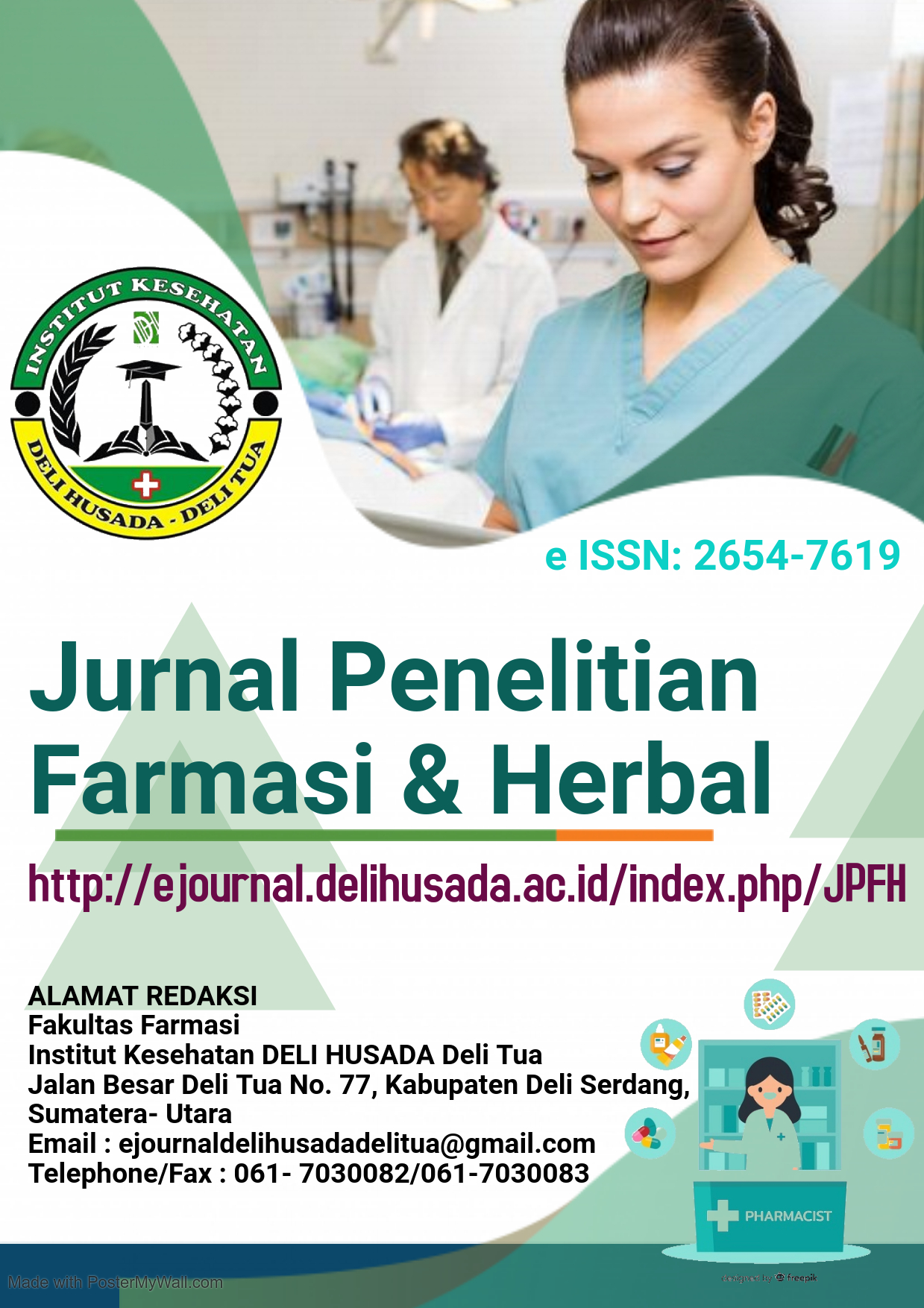SKRINNING RESEP INTERAKSI OBAT PASIEN DIABETES MELITUS DAN HIPERURISEMIA PERIODE OKTOBER 2023 S.D MARET 2024 DI RUMAH SAKIT ADVENT
Abstract
Diabetes Mellitus and Hyperuricemia are two chronic non-communicable diseases with increasing preval__ence and are often comorbid in patients. Managing these conditions requires long-term pharmacotherapy, which may result in drug interactions. eval__uating prescription completeness and potential drug interactions is essential to ensure effective and safe therapy. Diabetes mellitus is a condition in which blood glucose levels are chronically higher (hyperglycemia) than normal because the body lacks insulin or insulin function is ineffective. Hyperuricemia is a condition in which uric acid levels increase in the blood. This condition can cause gouty arthritis, which is inflammation of the joints due to uric acid buildup. To identify medications prescribed for patients with Diabetes Mellitus and Hyperuricemia, eval__uate potential drug interactions, and assess prescription completeness based on administrative standards in accordance with Indonesia’s Ministry of Health Regulation No. 72 of 2016. This study used a descriptive retrospective design with a cross-sectional approach. A total of 50 outpatient prescriptions at Advent Hospital Medan that met inclusion criteria from October 2023 to March 2024 were analyzed. Prescription screening covered administrative, pharmaceutical, and clinical aspects. Drug interactions were identified using the Drugs.com database and classified based on severity (major, moderate, minor). Commonly prescribed drugs for Diabetes Mellitus included Metformin, Glimepiride, Acarbose, and Pioglitazone; while for Hyperuricemia, Allopurinol, Meloxicam, and Sodium Diclofenac were most frequent. Ten drug interactions were identified: 8 moderate, 1 major, and 1 minor. The administrative eval__uation showed that most prescription components were complete, though some lacked documentation of body weight, address, and physician’s phone number. The most frequent drug interactions occurred at a moderate severity level, particularly between antidiabetic and NSAID medications. Comprehensive prescription screening is necessary to reduce adverse effects and improve therapeutic safety.







